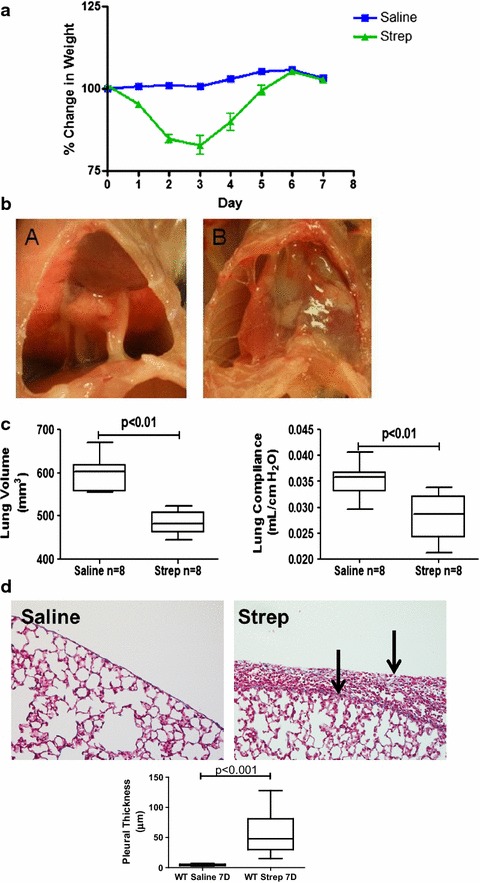Fig. 3.

Antibiotic treatment extends survival after S. pneumoniae-induced empyema which is characterized by persistent pleural fibrosis, rind formation and lung restriction. Antibiotic treatment was begun 18 h after S. pneumoniae was intrapleurally administered. a Weights were collected over a 7 days time course (n = 8 animals/group). The infected mice recovered lost weight by 6 days. b Gross images were taken 7 days after intrapleural administration of saline or S. pneumoniae. S. pneumoniae infection promotes progressive pleural injury and deposition of a fibrinous matrix with antibiotic treatment (subpanel B) when compared to saline controls (subpanel A). Representative images are shown (n = 6–8 animals/group). c Lung volumes and function (compliance) were significantly reduced by S. pneumoniae infection by 7 days (P < 0.01). d Lung tissue sections from saline and S. pneumoniae infected mice were trichrome stained for collagen deposition (blue). Solid arrows indicate the pleural surface and the basement membrane of the thickened pleura. Areas of collagen deposition were observed within the thickened pleural rind of S. pneumoniae infected mice. S. pneumoniae-infected mice had significantly increased pleural thickening when compared to saline controls (6–8 mice/group)
